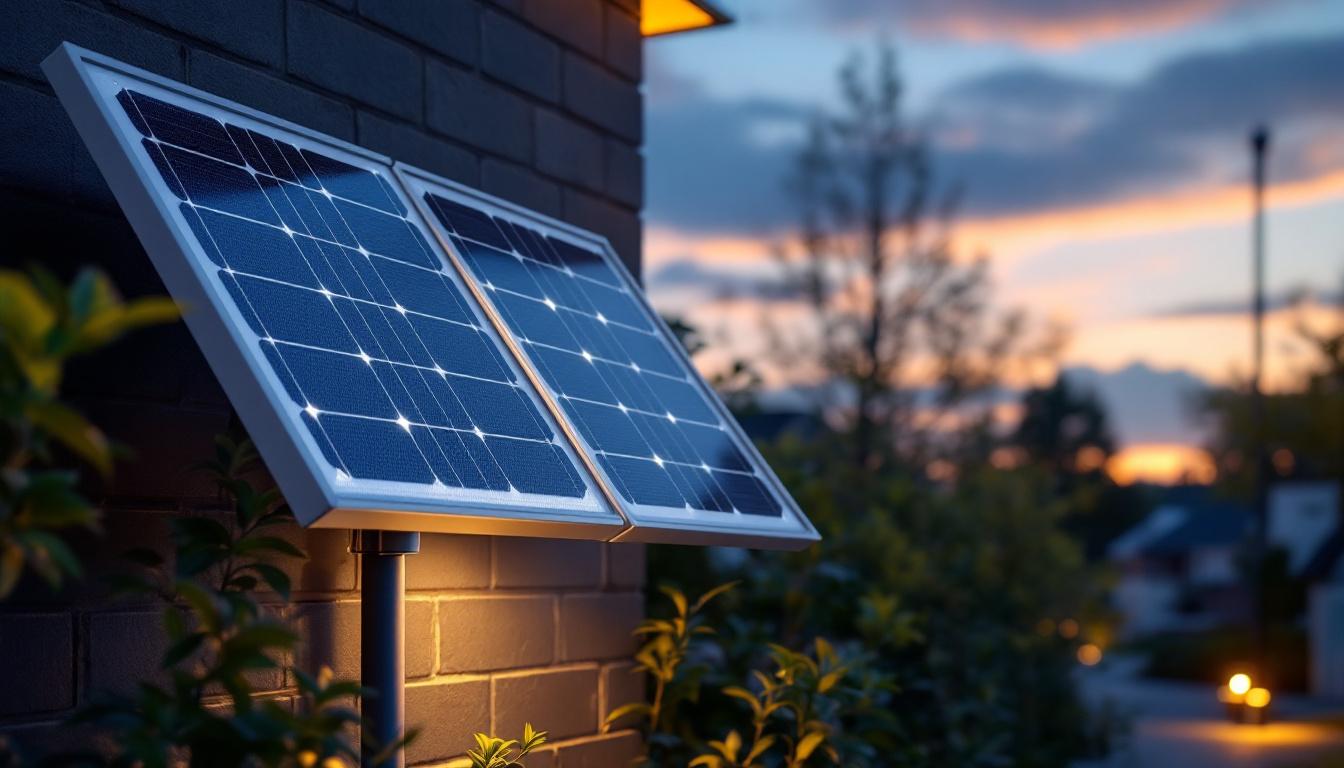
In the ever-evolving world of lighting solutions, solar panel flood lights have emerged as a sustainable and efficient option for both residential and commercial applications. As lighting professionals, understanding the intricacies of solar flood lights is crucial for delivering optimal solutions to clients. This article provides a comprehensive checklist designed to guide lighting contractors through the essential aspects of solar panel flood lights, ensuring that every installation meets the highest standards of quality and efficiency.
Solar panel flood lights harness the power of the sun to provide illumination, making them an eco-friendly alternative to traditional electric flood lights. They consist of a solar panel, a battery, an LED light source, and a control unit. This combination allows for autonomous operation, reducing energy costs and minimizing environmental impact. As technology advances, these lights have become increasingly efficient, offering brighter illumination and longer operational times, even in less-than-ideal weather conditions.
To effectively evaluate solar panel flood lights, it is essential to understand their key components:
Solar panel flood lights offer numerous advantages that make them appealing to both contractors and clients:
Moreover, solar panel flood lights are versatile in their applications. They can be used for security purposes, illuminating driveways, gardens, and pathways, or enhancing the ambiance of outdoor spaces during gatherings. Many models are designed to withstand harsh weather conditions, featuring durable materials that resist rust and corrosion, ensuring longevity and reliability. This resilience makes them suitable for various climates, from sunny regions to areas with heavy rainfall or snow. Additionally, the aesthetic appeal of solar flood lights has improved, with sleek designs that can complement modern architecture while providing essential lighting.
As the demand for sustainable solutions grows, manufacturers are continually innovating, leading to the development of solar flood lights with enhanced features. Some models now include integrated cameras for added security, while others offer customizable light patterns and colors, allowing users to tailor their outdoor lighting to suit specific occasions or personal preferences. With advancements in technology, the future of solar panel flood lights looks promising, paving the way for even more efficient and user-friendly options that cater to the diverse needs of consumers.
When installing solar panel flood lights, several factors must be taken into account to ensure optimal performance and longevity. The following checklist outlines the critical considerations for lighting professionals.
The placement of solar flood lights is paramount to their effectiveness. Here are some key points to consider:
The battery is a crucial component that determines how long the light will operate after sunset. Consider the following:
Before selecting solar panel flood lights, lighting professionals should evaluate various technical specifications to ensure that the chosen products meet project requirements.
The brightness of solar flood lights is typically measured in lumens. Understanding the required light output for specific applications is essential:
Solar panel flood lights must withstand various environmental conditions. Consider the following factors:
Proper installation is key to maximizing the performance and lifespan of solar panel flood lights. Adhering to best practices can prevent common issues and enhance user satisfaction.
Before installation, conduct a thorough assessment of the site:
Effective mounting is crucial for the optimal performance of solar panel flood lights:
Regular maintenance is essential for ensuring the longevity and efficiency of solar panel flood lights. Lighting professionals should be familiar with common maintenance tasks and troubleshooting techniques.
To keep solar flood lights operating at peak performance, consider the following maintenance tasks:
Even with proper maintenance, issues may arise. Here are some common problems and their solutions:
The field of solar panel flood lighting is continuously evolving, with new technologies and trends emerging. Staying informed about these developments can provide lighting professionals with a competitive edge.
Smart technology is making its way into solar flood lights, offering enhanced functionality:
Advancements in battery technology are paving the way for longer-lasting and more efficient energy storage:
Solar panel flood lights represent a significant advancement in sustainable lighting solutions. By following this essential checklist, lighting professionals can ensure that their installations are efficient, reliable, and tailored to meet the unique needs of each client. From understanding the components and technical specifications to adhering to best practices in installation and maintenance, being well-informed is key to success in this growing market.
As the industry continues to evolve, staying abreast of new technologies and trends will empower lighting contractors to provide innovative solutions that not only meet client expectations but also contribute to a more sustainable future.
Ready to elevate your lighting projects with the most efficient and sustainable solar panel flood lights on the market? Look no further than LumenWholesale, where we provide lighting professionals like you with spec-grade products at unbeatable wholesale prices. Our commitment to quality and affordability ensures that you can light up any space without breaking the bank. Plus, with free shipping on bulk orders, you can stock up on premium lighting solutions with ease. Don’t compromise on quality or cost—choose LumenWholesale for the best value in lighting. Wholesale Lighting at the Best Value.

Discover how LED decorative lights are transforming the lighting industry with their energy efficiency, versatility, and aesthetic appeal.

Explore the rising significance of dusk to dawn outside lights in the lighting industry.

Discover the ultimate guide to the 4.5-W-60 bulb, tailored for lighting professionals.

Discover the essential tips and strategies for lighting contractors to create the perfect ambiance in libraries.